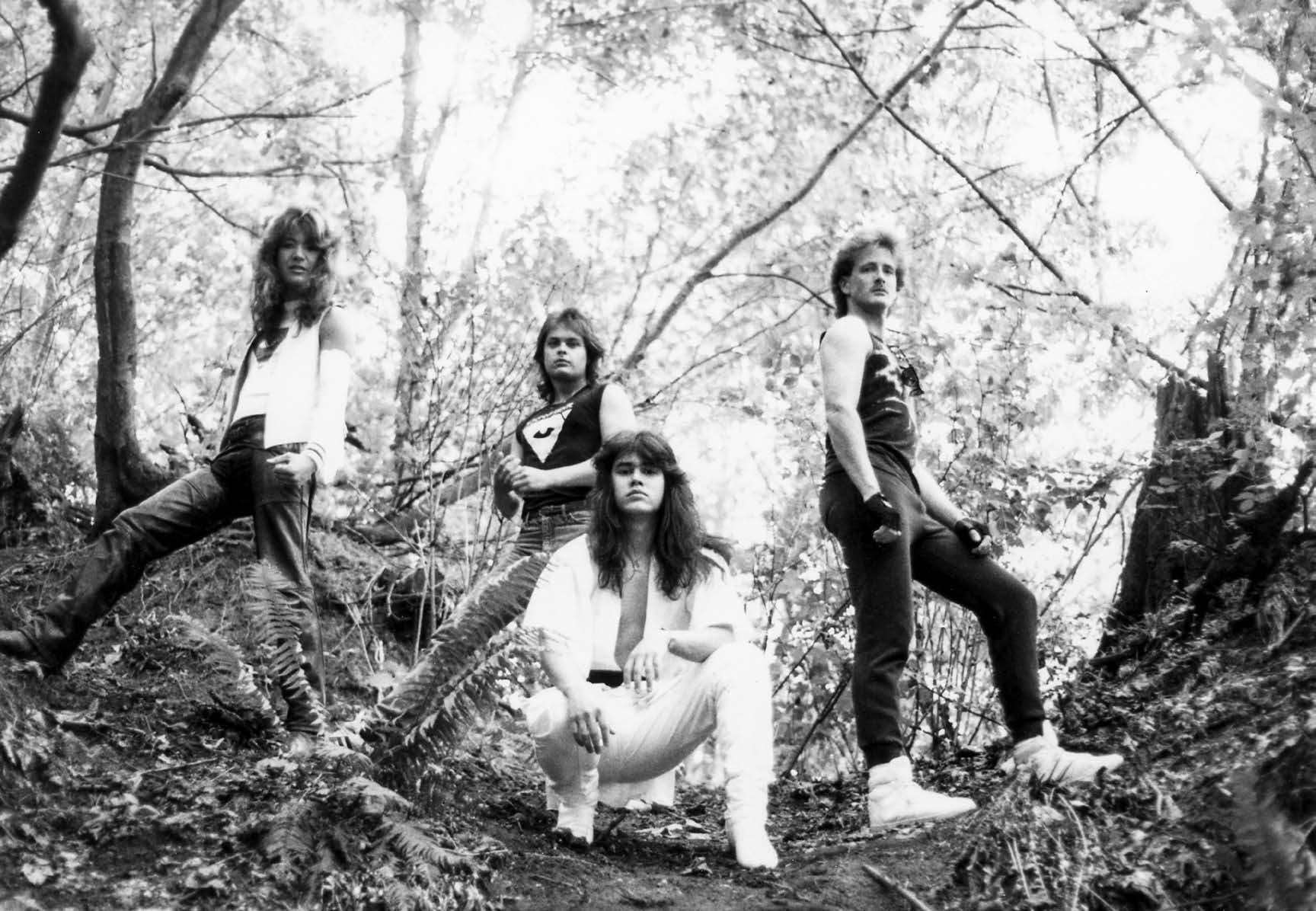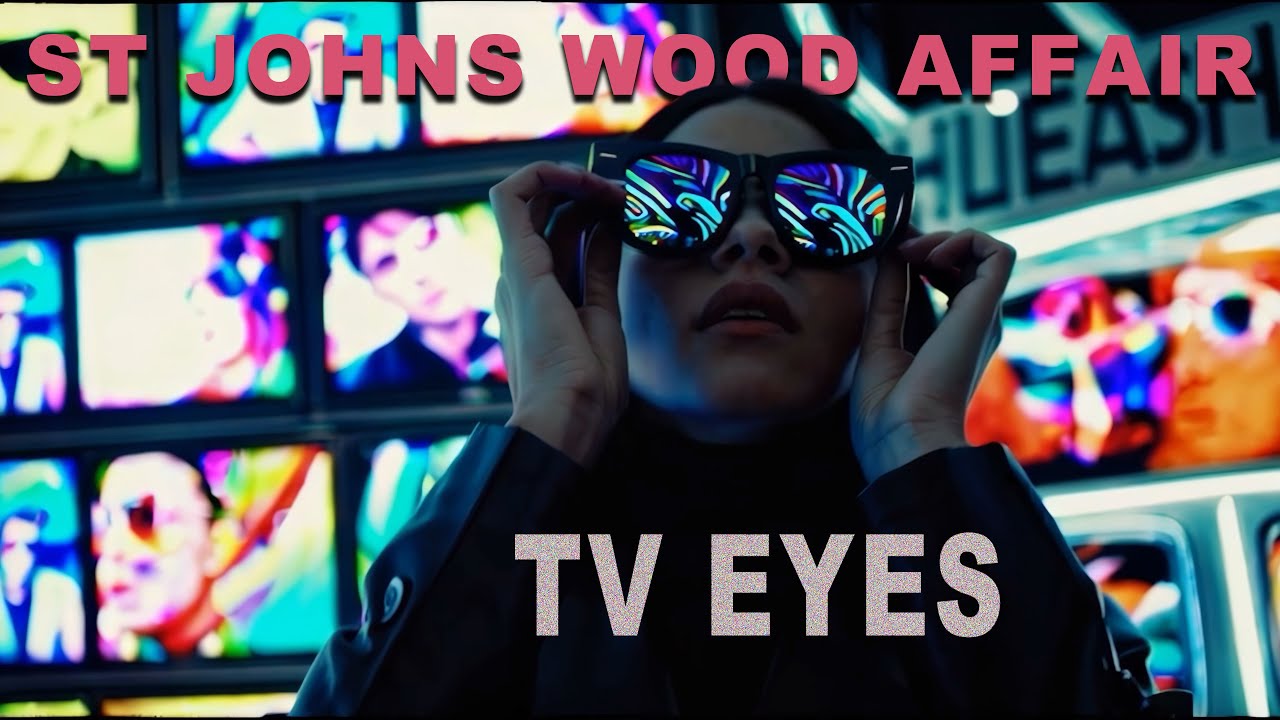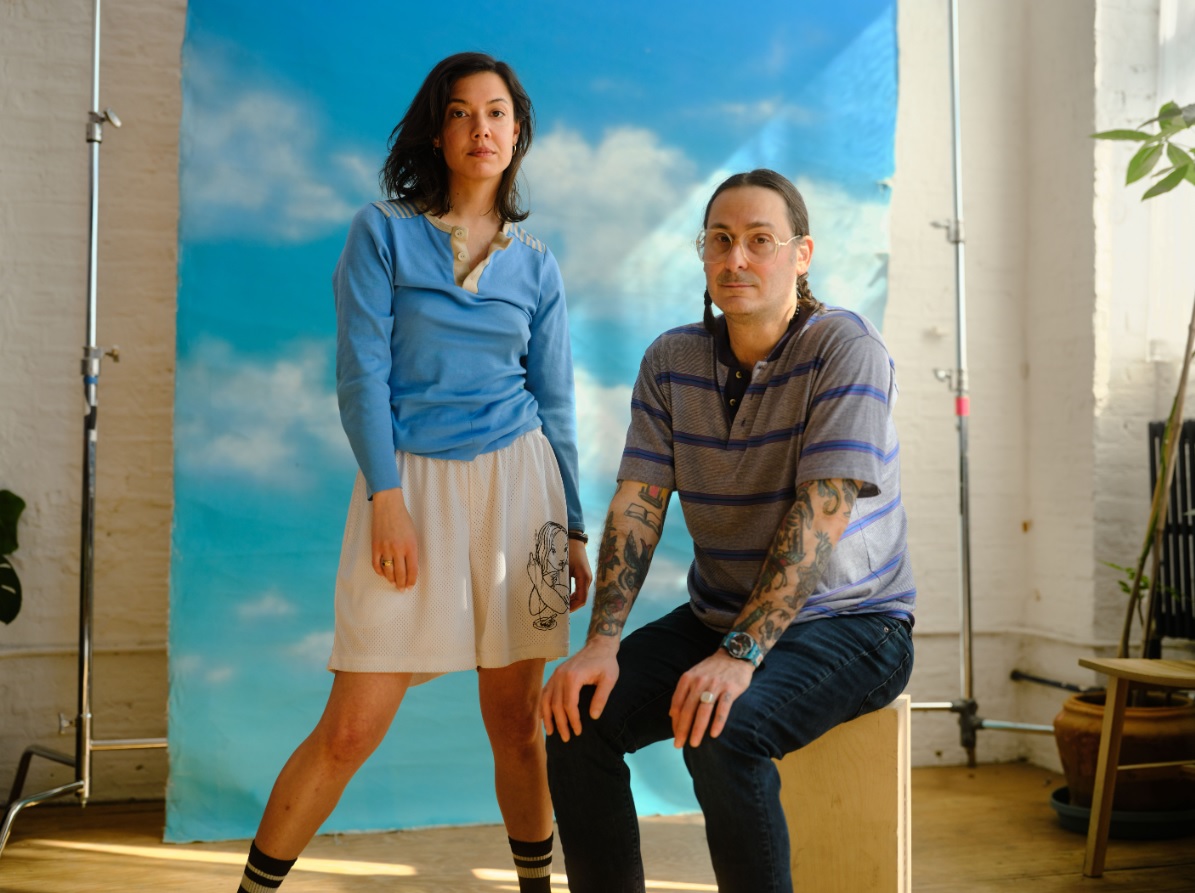Eidetic Seeing interview with Sean Forlenza, Paul Feitzinger and Danilo Randjic-Coleman
I don’t often play an album at the house where my father pops in from the other room to see who I’m playing, or my roommate pulls up a chair and lights up a smoke to finish out the album with me.
From the opening notes of “A Snake Who’s Years Are Long” to the closing notes of “K2” Against Nature is an awesome album for anyone who’s interested in delving further into the psychedelic music-scape. While most of the songs clock in at about eight minutes or longer, they seem to keep even the most discerning listeners interested and engaged. Another nice thing about the album is that most bands that are based around the ideals of Eidetic Seeing are either stuck in hyper-drive, playing a million miles an hour, or trapped in molasses plodding along at a snail’s pace. Eidetic Seeing are not only capable of switching it up they conjure up these really interesting soundscapes and an interesting unique ambiance. Everyone needs some real heavy psych in their life, but not a lot of bands fit that bill in the way that Eidetic Seeing do. Brewing up a tasty, twisted concoction of noise, garage, psych and metal influences Eidetic Seeing have been unleashing their heady sonic assault for almost four years now. Last year (2013) saw the release of their sophomore album Against Nature. Their first album Drink The Sun had caught my ear as a really interesting combination of a lot of the more improvisational heavy-psych and kraut/prog bands I had been listening to, with all the better traits of straight up heavy psychedelic garage rock added for good measure. Building up into frenzies and crashing into pits of mired noise, then exploding into these monstrous riffs that wash over the listener like waves of adrenalin, Eidetic Seeing has something special going on. I would tell you to turn on, tune in and drop out but you should definitely be paying attention to these guys when you drop the needle on this one ‘cause it’s a doozy! You can stream all three of their albums at the link below and I strongly suggest that you do, then pick up a copy of whatever you can get you grubby mitts on because once people catch on these LPs are gonna be a hot commodity I’m telling ya! All three founding members, Sean Forlenza, Paul Feitzinger and Danilo Randjic-Coleman, took time out of their busy schedules to do a small follow up interview to a piece that Klemen did a few years back to bring us all up to speed on just where Eidetic Seeing has been and where they’re headed from here. Tune in, turn on, pay heed and enjoy the ride!
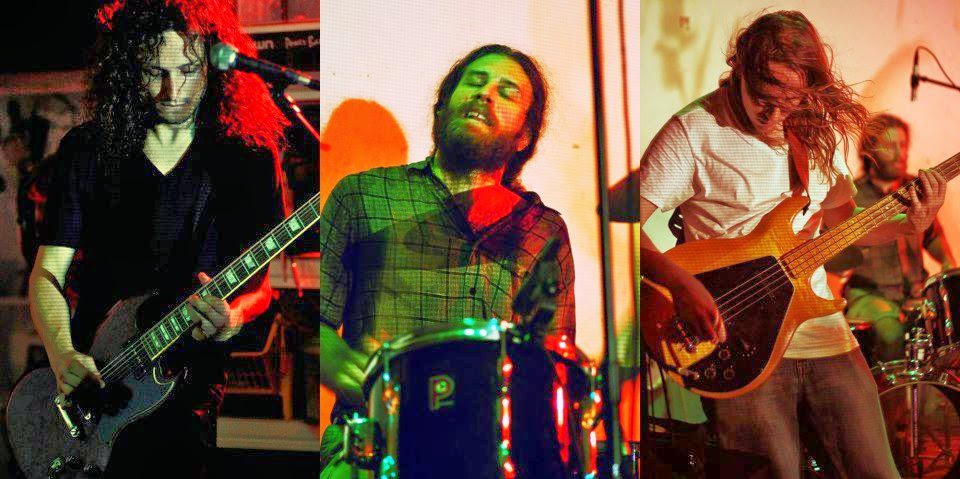
What is Eidetic Seeing’s current lineup? Is this the lineup that you’ve always had or have there been any changes since the band started?
Sean: The current lineup, which has pretty much been the same from the start, is me on guitar, Danilo on bass and Paul on drums and synth. In 2009, I had a few tracks that I recorded by myself and was toying around with the idea of starting a band. I played a house show with two other friends where we basically just jammed on the riffs I wrote. That was the one time I played with those guys and soon after, I decided to start a serious band. I knew Paul already and Danilo was recommended to me by a mutual friend. Once we got together, we all started writing together and the band has been that way since. We aren’t really the type of band that can switch around members. If one of us left, we would probably have to move on to something else.
Are any of you currently in any other active bands at this point? Have you released any music with anyone in the past? If so can you tell us a little bit about that?
Sean: I have a solo project called Mirbeau. I released one cassette last year called Silence and Blue Notes. Its minimal solo guitar pieces that are mostly improvised. It’s not really an active project, but there will probably be a new release in the future that will be in the same vein.
Paul: I was in a band call Manburger Surgical for a few years, we have a couple of physical releases and lots of digital ones. It was a very theatrical group with costumes and processions and ceremonies. Colin, the guitarist, was very interested in performance art and it heavily informed the direction of the group. When we started the band I’d been a musician for years but had never done much live performance, so Manburger threw me into the performance deep end, and overall that was a great experience for me as a musician and performer. We took lots of risks and they didn’t always work, but I learned a lot about improvisation and musical trust.
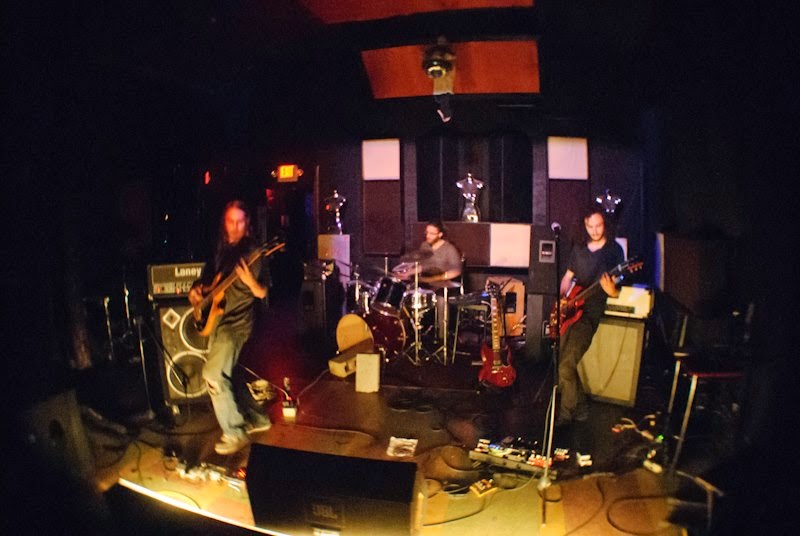
If you had to pick one moment of music that changed it all for you, a moment that opened your eyes to the infinite possibilities and altered your perception of music, what would it be?
Paul: This didn’t “change it all”, but I remember coming to appreciate bass parts in middle school after I got this keyboard that could store multi-voiced compositions on floppy disk. Prior to that I’d concluded, probably based on listening to the popular radio, that bass parts were simple and unnecessary. Give the bassist some.
Danilo: I grew up in NYC and my Dad is a musician, so it would be impossible for me to trace my musical history into a moment; it’s more like a long wavelength with a bunch of peaks and valleys. In no order whatsoever, a few experiences that I’ll never forget off the top of my head: watching my Dad play Jelly Roll Morton tunes in our East Village apartment on a baby grand, seeing a church organist perform a live score to Metropolis in Holyoke, Massachusetts, seeing Cecil Taylor absolutely obliterate a multi-thousand dollar piano, watching 77 Boadrum as the sun set under the Brooklyn Bridge, and most recently, watching Junzo Suzuki perform at Union Hall in Brooklyn.
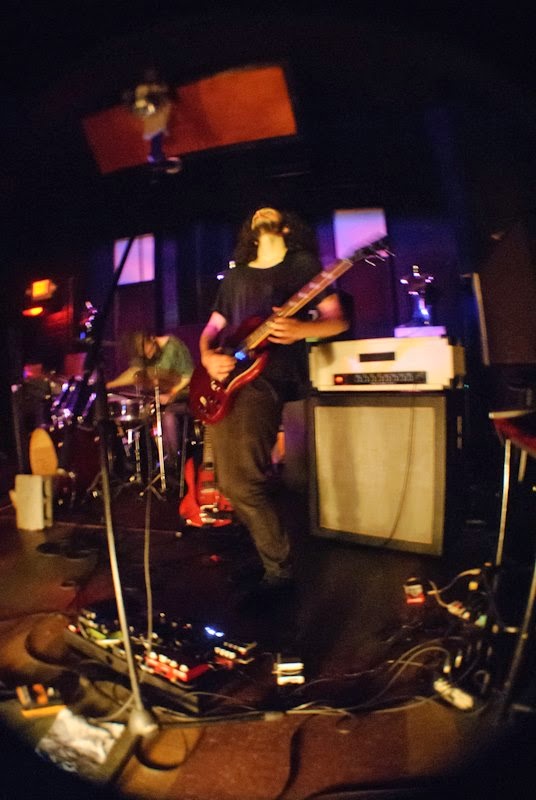
I really like your name, it’s somehow very evocative of the sound that you all create. What does Eidetic Seeing mean or refer to? Who came up with the name and how did you go about choosing it?
Sean: I was a philosophy student in college and the term “Eidetic Seeing” comes from the philosophy of Edmund Husserl. Husserl believed you could separate your personal “baggage” tied to objects and actually perceive their “essence.” Seeing this essence is called Eidetic Seeing. Eidetic comes from the Greek word Eidos, which means idea. To give a better reference to those who care, “Eidos” is the word that Plato used that is translated to “forms.” We don’t subscribe to this philosophy but chose the name because it fit with the sound of the band.

Is there any shared creed, code, ideal or mantra that the band shares or lives by?
Sean: No cops.
Has the local scene played a large role in Eidetic Seeing’s history or the way that you all sound? Or do you feel like you all could be doing what you’re doing and sound like you do regardless of your location or surroundings?
Sean: I was inspired by the shows I saw in New York, so I would have to say the access to so much live music definitely played a role in our sound. When I saw Michio Kurihara perform with Boris, I was blown away. I was always into heavy and psychedelic music, but that show made me want to write it myself and form my own band. Obviously Boris and Kurihara aren’t local but I used to go see La Otracina and White Hills a lot when I was in school, and meeting and befriending them certainly shaped Eidetic Seeing. Brooklyn and the greater New York City area is packed full of just about everything. It’s difficult to really discuss a “scene” here, but there is a community of people playing psychedelic and heavy music.
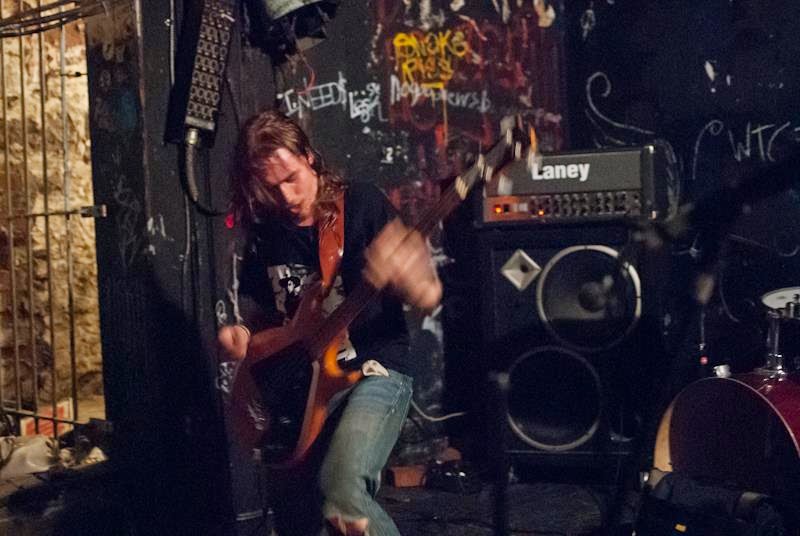
There’s a lot of things that I love about my job with Psychedelic Baby and there’s a lot of things that I’m really good at, describing bands is not one of those things. Rather than me making some strange attempt at describing you to our readers, how would you describe Eidetic Seeing’s sound in your own words?
Danilo: When we started our band, we were definitely aiming for a certain heavy psych style in the realm of bands like Acid Mother’s Temple, Les Rallizes Denudes and the local bands Sean mentioned. We’d pick out a few good riffs, let them expand and contract based on the feeling in the room and call it a song twenty minutes later. As we’ve become more accustomed to each other’s styles and comfortable with our own dynamics, we’ve begun incorporating our other musical influences into that same heavy psych base. In Against Nature, I think you can hear those influences throughout; as the album contains wisps of Kraut-Rock, Doom, Noise Rock, and free improvisation amongst the riffage and wreckage.
Can you talk a little bit about Eidetic Seeing’s songwriting process? Is there someone who comes up with a riff or something and brings it to the rest of the band to work out and finish or is there a lot of jamming that you all work on together and work out as a band?
Sean: It’s a bit of both. Sometimes one of us comes in with a riff or in some cases, a whole song. We then tweak everything together and write our own parts and decide what is best as a group. You never really know how something is going to sound until you play it together, so a lot of changes get made in the rehearsals. We also occasionally record our jams, and use parts we like as a starting point for a new song.
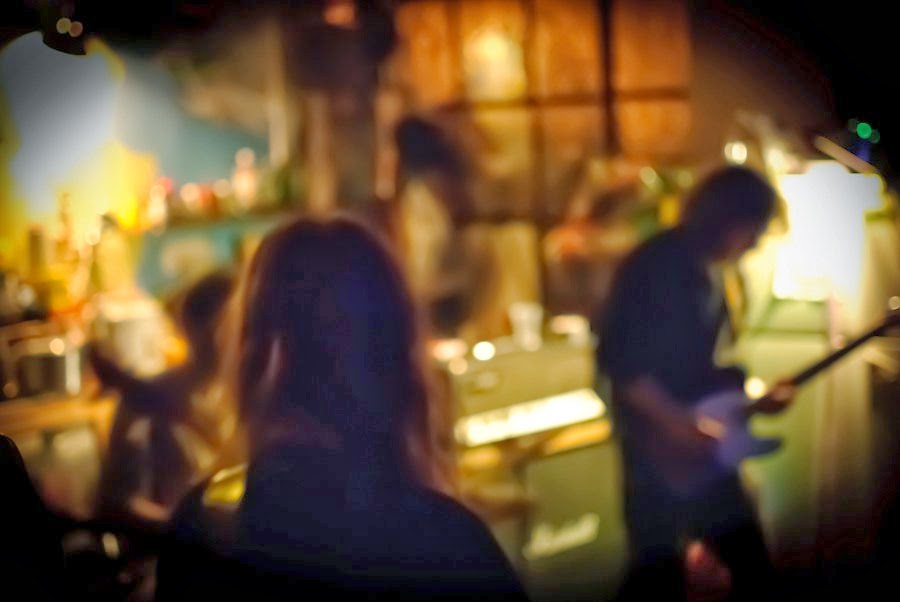
Does Eidetic Seeing do a lot of prep work before you record getting things all tightened down and sounding just the way that you want them to, or is the recording process more of a flexible one where things have room to breathe and change?
Sean: We prepare for months beforehand, getting the songs perfect and playing them our best. In the case of Against Nature, we made demos for all of the songs so that Charles Burst, who recorded the record, could hear the stuff beforehand. Once we get in the studio, we just do a few takes of each song and pick what’s best and if we have to, we choose one part to fit with another. Of course, it’s stressful this way in the sense that we aren’t able to just fix stuff by overdubbing and editing, but I personally find it easier this way.
Do you all utilize studio space for recording or do you enjoy a more DIY approach to recording where things are done on your own time and with your own equipment and personnel?
Paul: Eidetic Seeing was a change for me in that regard. Prior to Eidetic Seeing I’d always been more on the producer/engineer side of the recording process, and didn’t have much experience doing fully-live takes. Eidetic Seeing has other people handle recording. I was unsure about it at first, but I think it’s invaluable to have a third party to say, “what are you even talking about?” when you’re fixated on some minutia listening back on a take, and it feels great to be able to let go of the takes once we’re done for the day. There’s not much room for overthinking things.
Along with the Drink The Sun reissue in last year you also released your sophomore 12” Against Nature on ESR. Did you all try anything new or radically different when it came to writing or recording the new album? What can our listeners expect from Against Nature? Who recorded Against Nature? Where and when was that done? What kind of equipment was used? I know the Drink The Sun 12” was limited to 300 copies, is the Against Nature a limited pressing as well or is it an open ended edition?
Danilo: We recorded Against Nature with Charles Burst at the Seaside Lounge in Brooklyn. As we mentioned, we had recorded demos for each song before the session, so both he and we knew what we were aiming for before we stepped foot in the studio. From that point on, it was just a matter of execution. We recorded the whole album as live takes, with all of us playing together in the room, in about three days and then mixed it over a couple more. A few have some minor edits whereas some, like the Side A closer “Froleuse” is a full take, and actually the only take we recorded. In the past, I’ve recorded using scratch tracks and metronomes, with each person recording their part individually, but it always came out sounding a bit canned and artificial, probably because it is. This way, we get as close as possible to translating our live sound into a record, and for a band that’s so much about spontaneity and interpersonal dynamics, it seems appropriate. In terms of making the record limited, we will probably press more when we sell out of it, and we will most likely be releasing it in different mediums.

With all of the various mediums that are available to the artists today I’m always curious to hear why they choose and prefer the various methods that they do. Do you have a preferred medium of release for your own material? What about when you’re listening to and or purchasing music? If so, why?
Danilo: We definitely have a dedication to physical releases and the choice to put Against Nature out on vinyl was one we made long before we set out to begin recording. I personally have nothing against digital releases, and for the most part, I’m not really against digital downloading, unless it’s actively limiting an artist’s ability to survive off of their music. In our case, that’s not really a concern and the choice to release a vinyl is in part to buck the trend; so that those people that do pick up a record have an artifact that can’t be compromised. Like Drink the Sun, Against Nature is limited, at least in it’s first pressing, to 300 copies, and I like the idea that years from now, no matter how the music is eventually disseminated, at least 300 folks out there will be able to pull our record off the shelf for an unwitting guest, or maybe just themselves, and drop the needle on it.
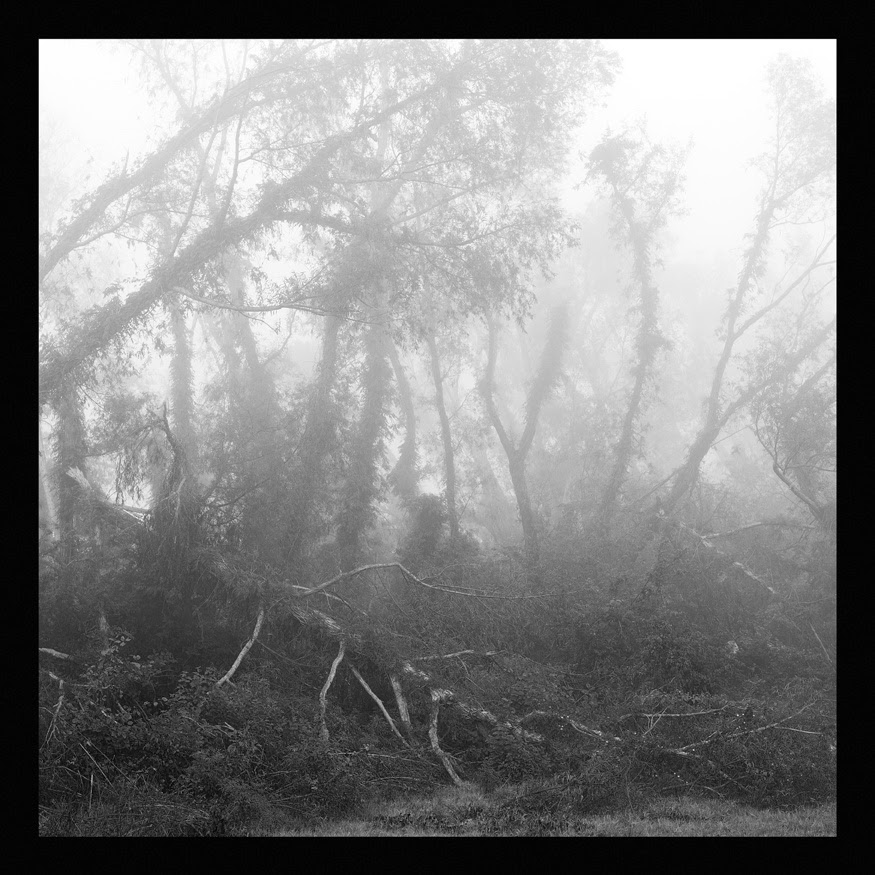
Where’s the best place for our U.S. readers and international and overseas readers to purchase your music and keep up with the band?
Danilo: U.S. and overseas listeners can both pick up our record at our Bandcamp page and you can keep up with our touring plans and any other updates at our personal website. We’re currently setting up a tour for the summer and hope to play some local shows in Brooklyn and the surrounding areas beforehand as well. We’re playing the Second Annual Hudson Valley Psych Fest in Kingston with White Hills and our pals It’s Not Night: It’s Space and The Golden Grass on April eighteenth (2014), which should be awesome. You can check out that event here.
In terms of recording, there’s nothing on the immediate horizon, but we do have almost enough material for a new album; when that will come together, time will tell. If you’re interested in booking us or have any other questions for the band, you can find our contact info on our website.
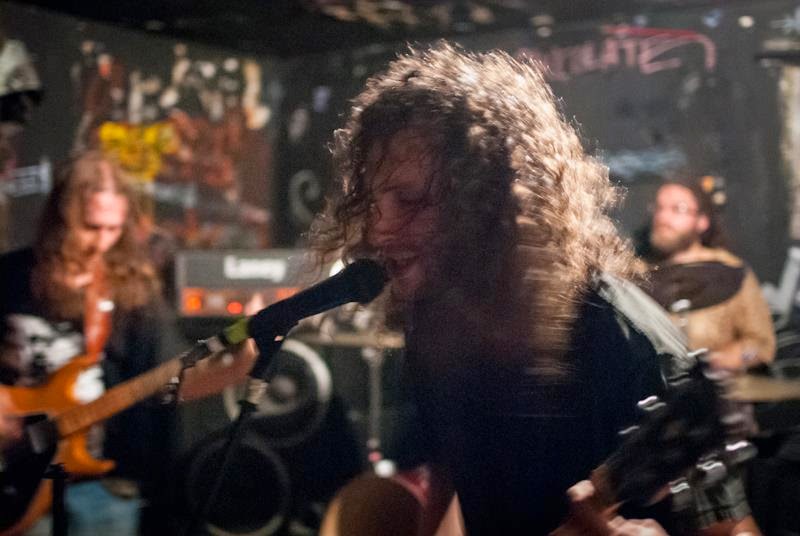
Who are some of your personal favorite bands that you’ve had a chance to share a bill with?
Danilo: There’s so many that it’s hard to list them all, but we’re always astounded at how many good bands there are out there in the world. A short sampling of some of our favorites we’ve played with in the past year are our comrades in arms I:N:N:I:S, Queen Elephantine, Horse, Junzo Suzuki, and Golden Grass. Three of those bands are playing with us at the Psych Fest in Kingston, so do yourselves a favor and check them out as well.
– Roman Rathert
DISCOGRAPHY
(2010) Eidetic Seeing – Eidetic Seeing – digital – Self-Released
(2011/2013) Eidetic Seeing – Drink The Sun – digital, Cassette Tape, 12” – Self-Released/ESR (12” Limited to 300 copies, Cassette has a unique track listing and a bonus track not on the Mp3 or Vinyl versions)
(2013) Eidetic Seeing – Against Nature – digital, 12” – ESR

